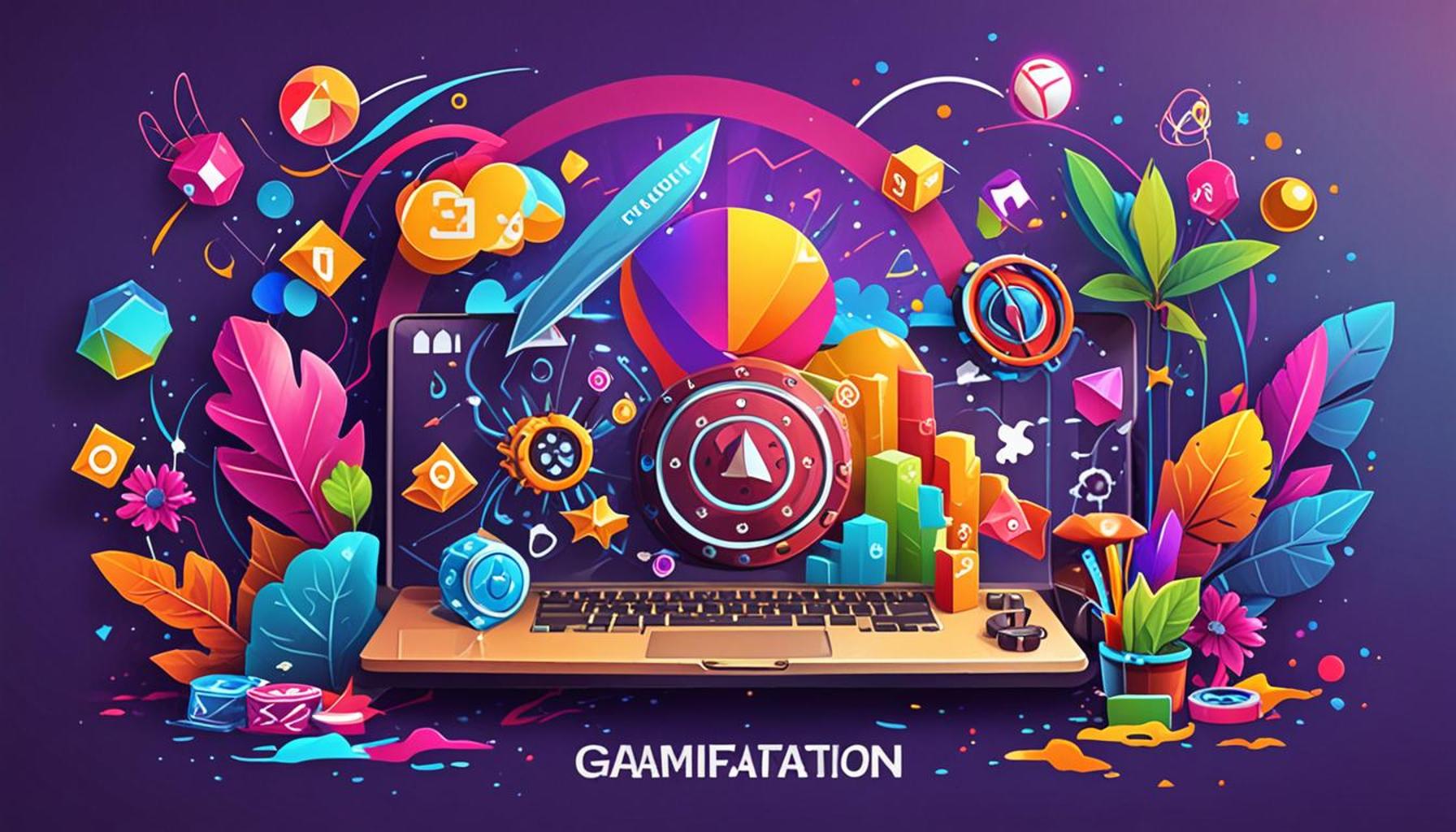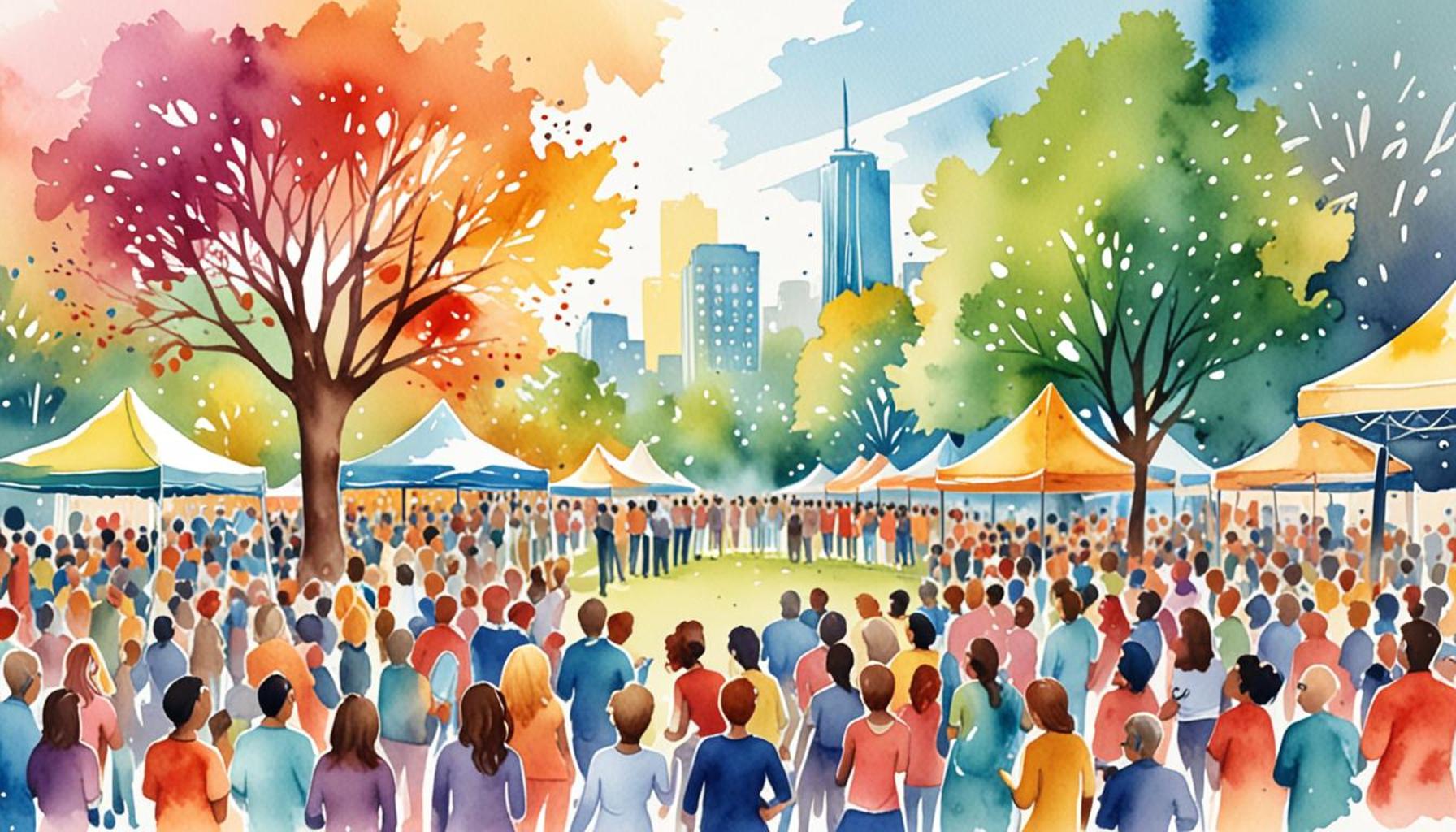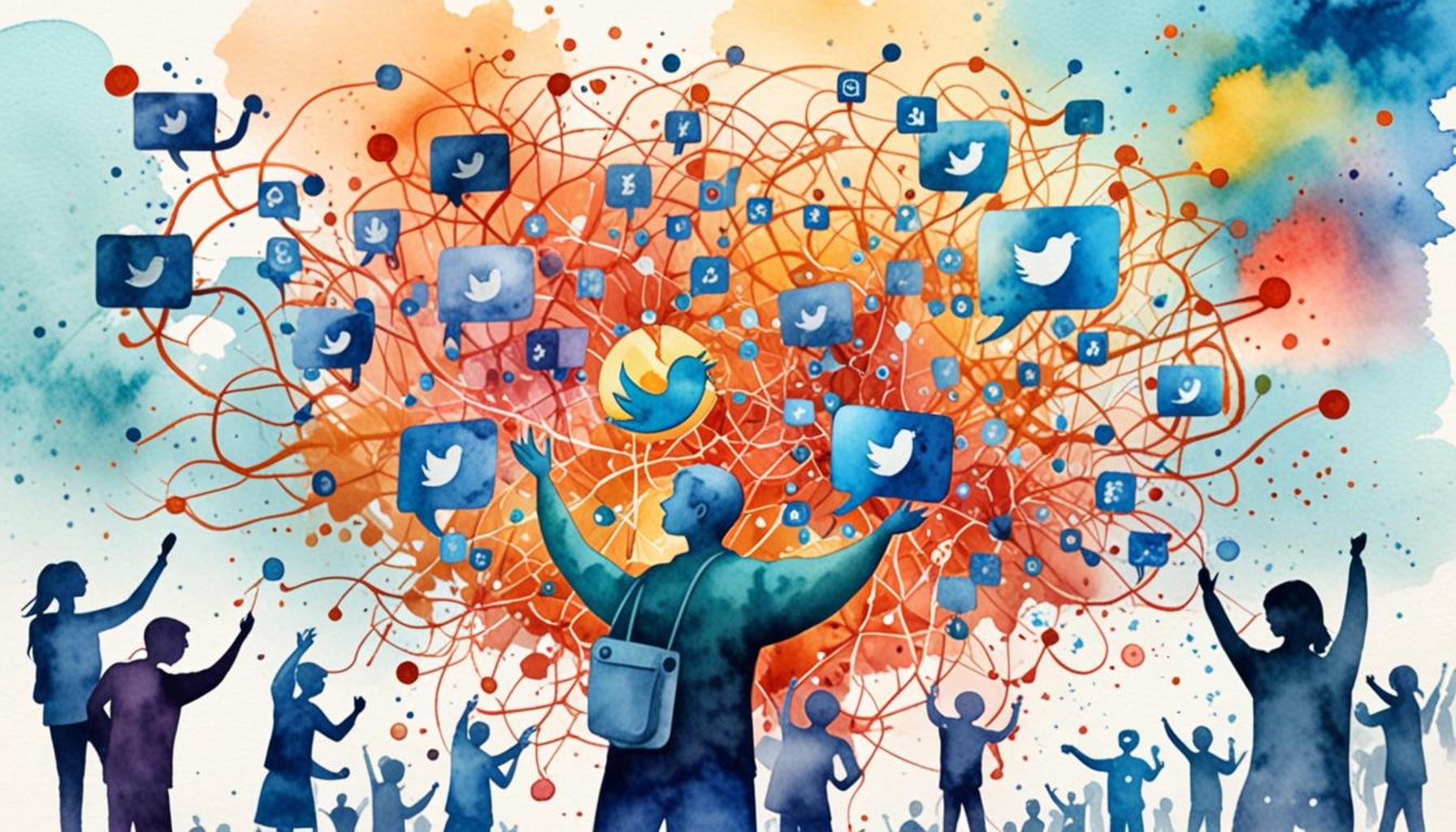Gamification Strategies to Increase User Engagement

The Impact of Gamification on User Engagement
In today’s fast-paced digital world, where users are bombarded with content from all directions, capturing and retaining attention has become increasingly challenging. Gamification strategies offer a unique solution by transforming mundane experiences into engaging and interactive ones. By incorporating game-like elements into non-gaming contexts—such as apps, websites, and training modules—businesses have discovered innovative ways to enhance user interaction, thereby fostering greater loyalty and participation.
One of the foundational features of gamification is the implementation of a points system. This approach involves rewarding users with points for completing specific tasks or engaging with content. For example, fitness apps like MyFitnessPal reward users with points for logging meals and workouts, encouraging consistent usage and promoting healthier lifestyle choices. The accumulation of points provides users with a tangible sense of accomplishment and progress, motivating them to remain active within the platform.
- Leaderboards: Adding a layer of friendly competition can significantly boost user engagement. By showcasing top performers on a leaderboard, companies instill a sense of achievement and encourage users to improve their rankings. For instance, platforms like Duolingo use leaderboards to inspire users to compete against friends or others learning the same language, increasing retention and participation rates.
- Badges and Achievements: Visual rewards, such as badges, celebrate user milestones, reinforcing their progress and keeping motivation levels high. Badges serve as both a personal accomplishment and a social signal. For example, LinkedIn incorporates badges to recognize professional achievements, which can not only boost user morale but also enhance their professional networks.
Statistics bolster the effectiveness of these gamification strategies; in fact, data indicates that organizations leveraging gamification can see up to a 48% increase in user engagement. This notable boost underscores the importance for brands to understand and implement these strategies to cultivate a dedicated base of users.
As we explore the world of gamification further, numerous innovative approaches and real-world examples become evident. Companies like Starbucks have successfully integrated gamification into their rewards programs, utilizing point accumulation to encourage loyal customer behavior and increase overall sales. These strategies demonstrate how gamification can lead to remarkable improvements in user engagement, reinforcing the necessity for businesses to harness this powerful tool.
Join us on this journey to discover even more creative gamification techniques and the tangible benefits they bring to brands and their audiences.
YOU MAY ALSO LIKE: Read read another article
Powerful Gamification Techniques to Boost User Involvement
As organizations strive to keep users engaged, implementing effective gamification strategies has become an essential weapon in the marketing arsenal. Beyond mere entertainment, gamification instills a sense of play while simultaneously fostering deeper connections with users. By further dissecting the core components of gamification, we can unveil how these strategies can transform the user experience and drive engagement rates significantly.
Central to the efficacy of gamification is the concept of challenges and missions. This strategy entails offering users specific tasks that require effort and creativity to complete. For instance, fitness apps frequently introduce daily challenges, such as a step count goal or a new workout regimen, that motivate users to push their limits. This sense of accomplishment not only promotes regular usage but also enhances the overall enjoyment of the platform. By setting attainable yet challenging objectives, businesses can mobilize their audience, encourage participation, and create a continuous engagement loop.
- Progress Tracking: Visual indicators of progress, such as completion bars or journey maps, play a crucial role in motivating users. When individuals can see how far they’ve come—be it in a learning app or a productivity tool—they are more inclined to continue using the service. Programs like Grammarly show users their writing scores and areas for improvement, encouraging users to refine their skills through ongoing engagement.
- Social Sharing Features: The incorporation of social elements can fuel user engagement dramatically. Allowing users to share their achievements or badges on social media platforms not only celebrates individual successes but also creates organic brand advocacy. Apps like Strava promote social supremacy, where users can compare their performance with friends, thus enhancing community interaction.
- Personalization: Tailoring user experiences based on individual preferences and behaviors can lead to increased satisfaction and continuity. Personalized recommendations and exclusive challenges increase a user’s sense of ownership and relevance within the platform. Spotify, for instance, curates playlists based on listening history, ensuring users feel uniquely catered to, thereby boosting retention rates.
Empirical evidence suggests that companies that boldly adopt these gamification tactics witness a significant increase in user retention rates. For instance, a study revealed that businesses employing gamified elements observed an astounding uptick in user participation—highlighting the power of engaging their audience beyond conventional strategies. This suggests that the integration of gamification isn’t merely a trend; it is becoming a necessary evolution for brands that aspire to maintain competitive advantage in today’s dynamic environment.
It is no surprise that organizations continuously seek to identify new and innovative gamification approaches that captivate their audiences. The music streaming giant, Pandora, utilizes gamification by crafting playlists that foster user interaction and personal music discovery, effectively integrating a playful element into their core service offering. Such examples serve as potent reminders of how gamification can lead to unprecedented enhancements in user engagement.
As we delve deeper into the realm of gamification, numerous strategies are waiting to be explored, each with the potential to redefine how users interact with brands and platforms alike.
Exploring the Impact of Gamification on User Engagement
Gamification strategies are revolutionizing how users interact with digital platforms by transforming mundane activities into exciting, rewarding experiences. As businesses strive to capture their audience’s attention, incorporating elements such as points, leaderboards, and challenges can significantly enhance user involvement. Below, we explore some advantages of implementing gamification strategies, formatted in the table below.
| Advantage | Description |
|---|---|
| Enhanced User Interaction | Gamification elements create an engaging environment, encouraging users to participate more actively. |
| Increased Motivation | Reward systems boost motivation, leading users to complete tasks and explore features. |
By utilizing game mechanics, organizations not only keep their audience entertained but also foster a sense of community through collaboration and competition. When users feel a personal connection with the platform, they are more likely to return, which is crucial for maintaining long-term engagement. Online learning platforms, for example, have seen a spike in course completions through gamified modules, showcasing the potential of this strategy across various sectors.Furthermore, integrating social sharing capabilities allows users to showcase their achievements, further enhancing their dedication to the platform. This social validation turns engagement into a competitive yet supportive atmosphere, making it essential for businesses aiming to thrive in a crowded marketplace. As we dive deeper into gamification, it’s important to consider not only how these strategies captivate users but also how they can be tailored to fit specific business goals and audience preferences, which will be explored in the following sections.
SEE ALSO: Click here to read another article
Innovative Gamification Approaches to Enhance User Connectivity
As the digital landscape continuously evolves, organizations are discovering new gamification strategies tailored to enrich user experiences and strengthen connections. These innovative approaches can tap into the emotional and psychological triggers of users, inspiring them to engage more meaningfully with platforms. Understanding the nuances of these advanced strategies is essential for brands aiming to capture and retain their audience’s attention.
One emerging technique is the use of leaderboards. By ranking users according to their performance, businesses can create a sense of healthy competition, prompting individuals to strive for improvement to secure a higher position in the rankings. This strategy is particularly effective in fitness and gaming applications. For instance, fitness apps like MyFitnessPal offer users the chance to track their workouts and calories while allowing them to see how they stack up against others. The display of public recognition not only encourages competitive spirit but also nurtures a communal atmosphere where users support each other’s journeys.
- Rewards and Incentives: Incentivizing users through rewards—be it virtual points, badges, or unlockable features—can significantly amplify engagement levels. A compelling example is the customer loyalty program designed by Starbucks, where users can earn stars on their purchases. These stars redeem for free drinks or items, providing strong motivation for repeat visits and increased spending, all through gamification techniques.
- Storytelling Elements: Integrating narratives into the user experience is another powerful strategy. When users become part of a story that unfolds with their progress—such as leveling up or unlocking new chapters—they are more likely to invest time in the platform to see what happens next. Apps like Duolingo leverage storytelling effectively, where users embark on language adventures through interactive challenges and quests, making the learning process engaging and enjoyable.
- Time-Limited Events: Crafting seasonal challenges or time-sensitive missions fosters urgency and encourages users to participate before the opportunity vanishes. This technique taps into the principle of scarcity, driving engagement as users rush to complete tasks and earn exclusive rewards. For example, video games such as Fortnite frequently launch themed events that compel players to engage in new gameplay within a specified timeframe, maintaining the buzz around the platform.
Research supports the impact of these gamification techniques on user interaction and satisfaction. A study conducted by the University of Michigan found that gamified experiences can lead to a remarkable increase in motivation levels—up to 48%—in users, especially when elements like rewards and competition are present. Such statistics reinforce the notion that a meticulously designed gamification strategy can effectively turn passive users into active participants.
Adaptability is key, as trends and user preferences shift. Brands such as Nike have effectively embraced this adaptability through their Nike Run Club app, which not only tracks running stats but also integrates social challenges and personalized coaching based on user feedback, maintaining relevance in a competitive market. This exemplifies the significance of remaining responsive to user expectations while nurturing engagement through gamification.
As marketers explore diverse applications for gamification, understanding the multifaceted strategies that resonate most with specific demographics is essential. The journey to harnessing gamification successfully is not merely about adopting strategies but recognizing the underlying human motivations that fuel engagement and loyalty.
CHECK OUT: Click here to explore more
Final Thoughts on Gamification Strategies for User Engagement
In an era where digital interaction plays a pivotal role in consumer behavior, gamification strategies are emerging as powerful tools to enhance user engagement. By integrating elements such as leaderboards, rewards, storytelling, and time-limited events, organizations can create immersive experiences that resonate deeply with users. These techniques not only elevate motivation but also foster a sense of community among participants, as evidenced by successful case studies like those from Starbucks and Duolingo.
The transformative potential of gamification lies in its ability to cater to the psychological drivers of users. Research indicates that gamified experiences can boost motivation levels significantly, with some studies reporting increases of up to 48%. This suggests that brands focusing on these approaches have the opportunity to turn passive users into enthusiastic advocates. Moreover, as demonstrated by adaptable brands like Nike, staying attuned to evolving user preferences is crucial in maintaining engagement over time.
As we move further into the digital age, the challenge for organizations is not merely to adopt these strategies but to deeply understand the unique motivations and desires of their target demographics. By doing so, brands can craft tailored gamification experiences that not only capture attention but also cultivate lasting loyalty. Engaging users through gamification is an art form that combines innovation with empathy, setting the stage for a vibrant marketplace where businesses thrive and consumers feel valued. The journey of leveraging gamification has only just begun, presenting new horizons for brands willing to invest in dynamic user engagement.


